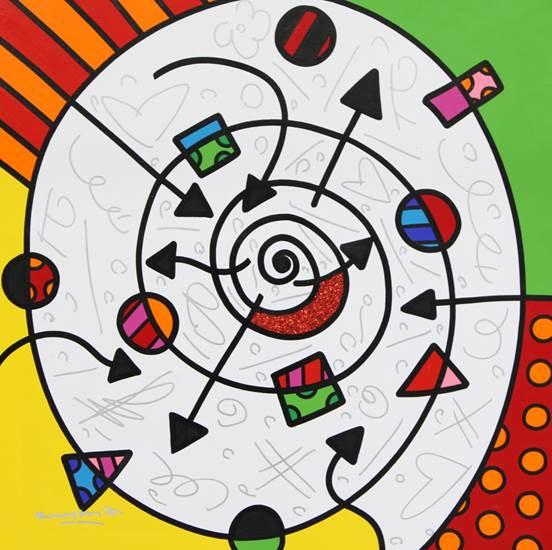Glossary of Dementia Terms
Dementia symptoms show up in loss of memory, movement disorders, and changes in the person’s language, judgment, and behavior.
The different types of dementia have:
Different causes
Slightly different symptoms
Agnosia
inability to comprehend, sense, or recognize things (including sounds) usually as a consequence of brain damage. More
Agraphia
neurological disorder causing a declinee in ability to communicate through writing. Writing skill may represent procedural memory, and agraphia errors indicate alterations in long-term memory
Alpha-synuclein
protein found in the brain and other parts of the body. Synucleinopathies aggregates form in Lewy bodies.
Alzheimer’s disease
the most common cause of dementia in older adults. Alzheimer’s disease is characterized by high levels of amyloid plaques and tau tangles in the brain but these cannot be found until the brain is examined in an autopsy.
Amyloid
a protein that aggregates to form plaques that appear in the brains of people with Alzheimer’s disease.
Alpha-synuclein
protein found in the brain and other parts of the body. Synucleinopathies aggregates form in Lewy bodies.
Aphasia
loss of comprehension and/or communication by one or more means. Aphasia is caused by neural dysfunctions.
Ataxia
loss of coordination in body movements
behavioral frontotemporal dementia (bvFTD)
neurodegenerative disease caused by damage to the prefrontal cortex
CAM-S Severity Score
A tool for measuring delirium severity with either the short or long assessment methods of CAM.
Cognitive reserve
term used in aging literature to refer to the ability of the brain to bounce back after minor brain damage or physical decline in brain functins do to aging. Different people perform mental tasks in different ways and some are more resilient than others. A person with high cognitive reserve shows fewer symptoms from brain damage or disease.
Confusion Assessment Method (CAM)
A standardized method that enables non-psychiatrically trained clinicians to identify delirium quickly and accurately in both clinical and research settings. Most widely used test in patients with dementia.
Corticobasal degeneration
breakdown of the cerebral cortex and basal ganglia and the symptoms and disorder that manifest in patients. Autopsies find patients’ brains have atrophied and buildup of the protein tau..
Delirium
state of confusion and reduced awareness. Associated with many mental illnesses, including dementia. The delirium is often acute - it passes with time.
Dementia
syndrome marked by impaired memory and other cognitive dysfunction.
Encephalitis
inflammation of the brain.
Frontotemporal disorders (FTD)
degeneration of the frontal and temporal lobes of the brain and dementia caused by it.
Lewy body dementia
common form of dementia characterized by abnormal structures called Lewy bodies in the brain.
Mild Cognitive Impairment
some loss in memory or reasoning ability but not to the point of dementia. Sometimes considered the "prodrome" of dementia.
Mixed dementia
when the patient has one form of dementia and another condition or dementia at the same time
Multi-infarct dementia (MID)
dementia caused by numerous small strokes.
Neurocognitive disorder
Non-psychiatric illness that results in decreased mental functioning. Formerly used to indicate dementia, or in the classification of the American Psychiatric Association’s Diagnostic Manual IV "Dementia, Delirium, Amnestic, and Other Cognitive Disorders".
Neurodegeneration
the progressive loss of nerve cell function.
Neurofibrillary tangles
bundles of protein filaments (tau proteins). Prevalent in the brains of people with Alzheimer’s disease.
Paradoxial Lucidity
phenomena seen in late-stage dementia patients in which the person's symptoms subside and they become briefly lucid. More.
Parkinson’s disease dementia
a dementia that sometimes occurs in patients with Parkinson’s disease.
Pick's Disease
Also known as frontotemporal dementia. Caused by degeneration of brain structure in the frontotemporal lobe. Patients may have difficulty with language, behavior, thinking, judgment, and memory.
Plaques & tangles
Abnormal clusters of protein Beta-amyloid protein that forms thickets between nerve cells and gradually build up. They may block cell to cell signaling at synapse.
Tau is an abundant protein in neurons. It normally has a parallel structure but in Alzheimer’s disease the protein collapses into twisted strands, known as Tangles.
Prospective memory
Remembering to perform planned activities. Tasks that involve remembering to carry out future intentions, and the brain processes that enable the completion of such tasks, are referred to as prospective memory.
Reminiscence
Palliative nursing technique to calm patients and promote a sense of wellbeing by reminding people about other points in their lives.
Sundowning Syndrome - aka Sundowning
A phenomenon in which patients of dementia and Alzheimer’s disease experience increased restlessness, confusion, and behavioral problems. Called sundowning because it starts in the late afternoon.
Tau
a protein that helps the functioning of microtubules, which are part of the cell’s structural support and help deliver substances throughout the cell. In several dementia disorders, tau twists into filaments that become tangles.
Tauopathies
Disorders associated with an accumulation of tau in the brain.
Vascular dementia
a type of dementia caused by brain ischemia (strokes). Second most common form of dementia. Also called vascular cognitive impairment (VCI).
Wandering
Walking around with no apparent aim. Common behavior in Alzheimer’s and dementia patients, they often experience problems in orientation and memory.


